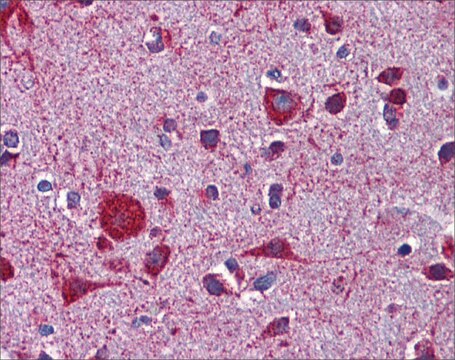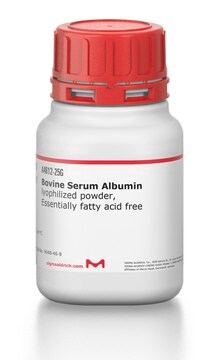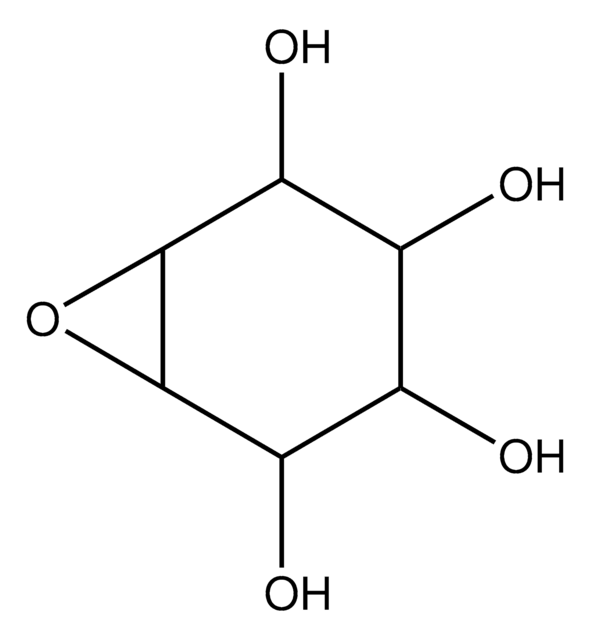MABN1872
Anti-ApoER2 Antibody, clone 4H3E6
clone 4H3E6, from rat
Synonyme(s) :
Low-density lipoprotein receptor-related protein 8, ApoER2, Apolipoprotein E receptor 2, LRP-8
About This Item
Produits recommandés
Source biologique
rat
Niveau de qualité
Forme d'anticorps
purified immunoglobulin
Type de produit anticorps
primary antibodies
Clone
4H3E6, monoclonal
Espèces réactives
mouse
Technique(s)
immunofluorescence: suitable
western blot: suitable
Isotype
IgG2aκ
Numéro d'accès UniProt
Conditions d'expédition
ambient
Modification post-traductionnelle de la cible
unmodified
Informations sur le gène
mouse ... Lrp8(16975)
Description générale
Spécificité
Immunogène
Application
Immunofluorescence Analysis: A representative lot detected developmental stage-dependent ApoER2 expression patterns among 4% paraformaldehyde-fixed, OCT-embedded frozen embryonic (E13.0 to E18.5) and neonatal (P0) brain tissues from wild-type, but not Apoer2-knockout mice (Hirota, Y., et al. (2015). J. Comp. Neurol. 523(3):463-478).
Western Blotting Analysis: A representative lot detected HA-tagged full-length mouse ApoER2 exogenously expressed in HEK293T cells (Hirota, Y., et al. (2015). J. Comp. Neurol. 523(3):463-478).
Neuroscience
Qualité
Western Blotting Analysis: 0.5 µg/mL of this antibody detected ApoER2 in 10 µg of embryonic E16 mouse brain tissue lysate.
Description de la cible
Forme physique
Stockage et stabilité
Autres remarques
Clause de non-responsabilité
Vous ne trouvez pas le bon produit ?
Essayez notre Outil de sélection de produits.
Code de la classe de stockage
12 - Non Combustible Liquids
Classe de danger pour l'eau (WGK)
WGK 1
Point d'éclair (°F)
Not applicable
Point d'éclair (°C)
Not applicable
Certificats d'analyse (COA)
Recherchez un Certificats d'analyse (COA) en saisissant le numéro de lot du produit. Les numéros de lot figurent sur l'étiquette du produit après les mots "Lot" ou "Batch".
Déjà en possession de ce produit ?
Retrouvez la documentation relative aux produits que vous avez récemment achetés dans la Bibliothèque de documents.
Notre équipe de scientifiques dispose d'une expérience dans tous les secteurs de la recherche, notamment en sciences de la vie, science des matériaux, synthèse chimique, chromatographie, analyse et dans de nombreux autres domaines..
Contacter notre Service technique








